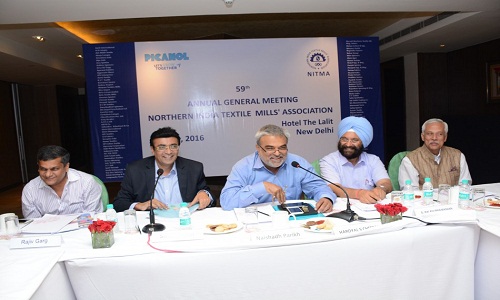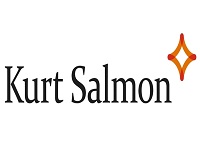FW
"For decades India’s textile industry has been cotton based with more than 60 per cent of the textiles skewed towards cotton. While world over man-made fabric has around 60 per cent share and cotton is less than 40 per cent, in India it is reverse primarily because cotton is the largest produced crop across 10 states in the country. India became the largest cotton producer surpassing China in 2014-2015 and continues its lead for the subsequent year."

For decades India’s textile industry has been cotton based with more than 60 per cent of the textiles skewed towards cotton. While world over man-made fabric has around 60 per cent share and cotton is less than 40 per cent, in India it is reverse primarily because cotton is the largest produced crop across 10 states in the country. India became the largest cotton producer surpassing China in 2014-2015 and continues its lead for the subsequent year. Despite maintaining its lead in global cotton production, India finds itself facing few major concerns including declining harvested area, yield and pests.
Concerns over declining area and higher prices

As per Northern India Textile Mills’ Association (NITMA ), India’s surplus cotton has dwindled, leading to competition between exports and domestic usage, now industry has been forced to import in end season. India is also struggling with one of the weakest stock to use ratio of 12 to 15 per cent against world average of 80 per cent. Adding to this, India’s domestic cotton prices are much higher than international prices and value added industry especially spinning has been suffering despite a strong cotton crop. In 2013-14, India had its largest ever crop of 390 lakh bales yet for nine months of the season, Indian prices were higher than global prices. In 2015-16, prices jumped up 50 per cent in two months and industry had to import, as 20 per cent crop had been exported earlier to competing nations.
The situation is becoming increasingly alarming as the country doesn’t have sufficient surplus cotton, however, exports are strong leading to forced imports at high prices at end season. Also, with countries like Pakistan, Bangladesh, Vietnam, China etc, buying 20 to 30 per cent of our crop, the industry is being forced to import. A statement by NITMA reveals, FY-2016-17 exports are same as 2015-16, domestic mills will face lack of raw material despite high imports. Moreover 2016-17 cotton balance sheet is precarious as sowing is 10 to 15 per cent less and low opening stock. Also, there has not been proper mechanism for measuring crop arrivals and forecasting crop which doesn’t give an industry insight. The uncertainty and concern also stems from the fact that India does not have a clear cotton fibre policy yet.
Domestic mills faces challenge without clear cotton policy
To address rising concerns, NITMA recommends the government interference to ensure sufficient availability of cotton at competitive prices to the industry – otherwise the industry would find it difficult to move up the value added chain and become a large manufacturer of textile products like China, Bangladesh etc and it could instead be rendered as a supplier of raw material like African, CIS nations. Addressing these concerns Sanjay Jain, NITMA President & Deputy Chairman, NITRA says “Allow funding for cotton stocking at subsidized rates of 2 per cent below the base rate for the period October – April, so that industry can stock cotton and ensure farmers get a better price. A system of direct subsidy should be started for farmers when cotton kapas prices fall below MSP.” Insisting on developing a scientific measurement system to forecasts crop arrival he adds “It needs to be conducted by an independent agency. This would avoid mishaps of 2013-14 and 2015-16 where incorrect crop estimates lead to huge losses for the industry as it induced domestic prices going above international prices for a large part of the season.”
NITMA also suggested the creation of a Cotton Board with a clear mission and goal to take India’s productivity to 1,000 kg of lint/hectare by 2020. Jain says “Farmers earnings growth needs to come from productivity and efficiency rather than industry paying more for fibre – this is only way to protect interests of both farmer and industry. There is good scope for increasing yield if agronomy research is taken up & farmer is given knowledge on Precision Farming Techniques.” As the farming techniques differ from area to area, Jain also advocated the idea of scientifically determining the area for accurate and latest forecasting . Further he strongly opines “there should be no discrimination between small and big players – both should be on the same footing government intervention should not lead to unpredictability and uncertainty of supply flow for the industry.”
Global production of apparels increased 1.9 per cent in Q2 but was outpaced by global textile production which grew 3.8 per cent. A new United Nations report states, developing and emerging economies led the gains. On the other hand, textiles registered growth of 5.3 per cent and apparel 3.1 per cent while in rich nations, production fell 0.9 per cent for textiles and 2.7 per cent for apparel.
The results, however, were mixed among producing nations in both emerging and rich economies in both sectors, the report said. This reflects the fragile recovery process in industrialised economies and the significantly weakened growth prospects in developing and emerging industrial economies.
Significant growth rates of over 9 per cent were found in production of apparels in Poland, Turkey and Vietnam in particular, the report disclosed. In the aftermath of protracted economic crisis, China, which emerged as the largest global manufacturer, entered a transition period and witnessed a more balanced growth pace. This pushed the average industrial growth of emerging industrial economies downward.
The report also said that the world’s manufacturing growth has also been affected by the generally lower growth rate in the US and Japan. The overall manufacturing growth in Europe, North America and East Asia remained sluggish during the quarter, the report found. World manufacturing output rose by 2.2 per cent in the quarter compared to the same period last year which is marginally higher than the 2.1 per cent growth estimated for the first quarter of 2016.
Textile and apparel firms in China's Xinjiang Uyghur Autonomous Region are actively seeking opportunities in neighbouring countries in Asia and Europe at the ongoing 5th China-EuroAsia Expo which is being held in the region's capital Urumqi. Around 121 companies of Xinjiang are participating in this year's expo. Many textile and fabric products such as Idili silk, Hotan carpets and camel's hair textiles produced in Xinjiang are being presented in the five-day expo.
Nearly 12 foreign companies including some from Russia, Pakistan and Kazakhstan have shown strong interest in cooperation. Some business representatives from companies in neighbouring countries are participating in the expo especially because of the garments and carpets produced in Xinjiang.
As the company continues to grow, Yutai is carving out opportunities to expand into Asia and European countries. The company had signed agreements worth $3.15 million with foreign companies. The increase in opportunities to do business with Asian and European countries is fueled by Xinjiang's geographic location along the Belt and Road initiative and preferential government policies, industry players claimed. It is said that the time and cost of deliveries have shrunk a lot thanks to cross-border basic infrastructure building.
In line with the Belt and Road initiative, the Xinjiang government has rolled out a series of measures including credit support and electricity subsidies, in a bid to prompt industry development. The textile industry in Xinjiang has seen rapid growth in the last two years. In 2015, its total fixed-assets value stood at 31.79 billion yuan, up 231 per cent year-on-year, it has been reported. The labour-intensive textile industry has provided many job opportunities in Xinjiang, it has been reported. For example, 382 new textile firms emerged in 2015, creating a total of 97,000 jobs, said the report.
Despite an overall slump in India’s textile sector, Gujarat has performed remarkably well through policy support from both the Centre and the state government. The textile sector in the state has registered a growth of 18 per cent. The Textile Commissioner’s regional office in Ahmedabad reported that over the past decade since 2004, Gujarat has maintained a consistent growth of nearly 18 per cent. The Centre’s Technology Upgradation Fund Scheme (TUFS), along with the state government’s policy has helped entrepreneurs in the State to reap huge benefits in the sector.
Currently there are 144 composite mills including those for spinning, 897 cotton ginning and processing units, 22 surgical cotton units, 2,362 units for processing of readymade garments, 362 units for technical textiles, 513 power processing units and 1,146 hand processing units in Gujarat. Of these 95 per cent are located in Rajkot. Additionally, Gujarat also currently has 60 home textile units and 5,053 preparatory units for weaving.
Gujarat, which has been a hub for the textile industry since the 19th century, has been active in availing TUFS as compared to other states. According to records maintained by the regional office in the State, of the 5,136 applications made for 15 per cent of capital subsidy scheme, nearly 87 per cent originated from Gujarat. Of the Rs. 230.11 crore subsidy disbursed, 75 per cent was to units and entrepreneurs in Gujarat.
The capital subsidy scheme also allows for 20 per cent and 30 per cent subsidy exclusively for weaving units. For the former, nearly 28 per cent of 4,267 applications were from Gujarat while 25 per cent of R382.02 crore subsidy was disbursed to units in Gujarat. Under the 30 per cent subsidy scheme, about 46 per cent of 441 applications hailed from Gujarat and nearly 50 per cent of the R178.03 crore was also disbursed in Gujarat.
August and September saw poor demand for polyester industrial yarn in China. But polyester industrial yarn export growth expanded rapidly, far higher than that of 2015. Foreign buyers largely procured ahead of time. August/September exports may see negative growth rates. The G20 regulation did not affect PIY production much, only about 10 per cent of total PIY capacity in China.
Downstream plants widely stocked raw materials with expectations of higher prices in future. Foreign sales were brisk in the first half of 2016. The polyester textile filament market was heavily impacted as a lot of plants shut down and spot prices were pushed up. Downstream may need to replenish their stocks and polyester industrial yarn plants may cut inventory at the point. Their profits were very thin. Demand for downstream products, for geo-technique or car use, etc. too decreased.
Sales promotion is one way of stimulating downstream demand and improving the market situation. Polyester industrial yarn has been one of the most widely used yarns among all types of industrial yarns and it is known for its high tenacity, low elongation and high abrasion resistance. High tenacity yarns are required in a variety of industrial applications such as conveyor belts, ropes, geo-grids, lashings /slings, automotive seat belts and industrial fabrics.
Paula Schneider, chief executive officer of American Apparel, has decided to relinquish her duties after a two-year successful service. She will be replaced by Chelsea Grayson who has been with the company through most of its difficult times including the time when the company filed for bankruptcy last year. Later, it emerged as a private company earlier this year. Most recently, Grayson served as American Apparel’s general counsel and chief administrative officer.
Sources close to the company said that Schneider voluntarily resigned from the company and was not pushed out. She is confident of Grayson as the new head of American Apparel which is still going through a rough patch. In her resignation letter, Schneider said that the turnaround plan for American Apparel was in place and that much of the heavy lifting and hard work had been done. Schneider’s move comes at a time when the company is up for sale. Schneider hinted that a potential sale of the company was another impetus for leaving.
"The ‘2017 Global Sourcing Reference’ report from Kurt Salmon highlights as sourcing costs rise, retailers are being urged to reinvent their operating models to add value in their supply chains. Fast fashion entails retailers and brands to react equally as quickly to meet the demand of consumers, which has resulted in stiff competition. In order to beat one another, brands are introducing more lines per year at lower costs. The report further emphasises speedy production cycles are having a negative impact on the entire supply chain, with fashion brands and retailers struggling to keep up."

The ‘2017 Global Sourcing Reference’ report from Kurt Salmon highlights as sourcing costs rise, retailers are being urged to reinvent their operating models to add value in their supply chains. Fast fashion entails retailers and brands to react equally as quickly to meet the demand of consumers, which has resulted in stiff competition. In order to beat one another, brands are introducing more lines per year at lower costs. The report further emphasises speedy production cycles are having a negative impact on the entire supply chain, with fashion brands and retailers struggling to keep up.

Another report, ‘From Cost Focus to True Value Creation – On the Road to Analytical Sourcing & Supply Chain,’ outlines both commercial fashion brands and premium/luxury brands are finding it difficult to maintain comparable levels. Often, even total sell-through falls to levels below 70 per cent, causing inevitable margin losses from skyrocketing markdowns far beyond benchmark levels of 12-15 per cent.
Rising sourcing cost
Despite losing market share, China is still by far the biggest apparel exporter to the EU, at 28 per cent. While Bangladesh’s share is 19 per cent, Turkey 11 per cent, and India has 6 per cent. Meanwhile countries like Poland and the Czech Republic, are increasing their stake in the sourcing landscape. Far East importers make up 72 per cent of the value of top 20 countries, whereas Greater Europe stands for 22 per cent, and Africa 6 per cent.
Production Cost Index (PCI) values are rising sharply across all main sourcing regions. Plus, global cost increases for apparel and footwear production have steadily continued during the last two years. Sourcing markets with stable costs are rare while the majority show strong to strong increases of production costs. This does not only affect China, which has seen a strong upward trend for many years but also many of the typical low-cost sourcing destinations in Southeast Asia, such as Bangladesh, Pakistan and Indonesia. The report states recent cost increases have been driven by both rising labour costs and strengthening local currencies in the sourcing markets versus the US dollar and the euro.
Higher labour costs are due to rising minimum wages and the growing competition for skilled factory workers and increasing alternative work offers, especially in China. To capitalise on cost-effective markets, many retailers have shifted production from established yet increasingly costly regions, such as Southeast China, to less developed but cost-wise regions, such as Western China, Myanmar, and Cambodia. But, this is a temporary solution because even though cost pressure may reduce in the short term, it is a risk to flexibility and operational performance as well as product quality and CSR.
Sourcing priorities
Beyond production cost optimisation, there are more powerful levers that can help solve the current market challenges many brands and retailers are facing. The markdowns of 15-25 per cent of net sales are a powerful source of gross margin improvement. A close alignment between production development and supplier can play a significant role in unlocking this potential by providing ‘true’ consumer value and brand differentiation with regards to product innovation, time to market, reliability and execution excellence, as well as superior technical capabilities and quality.
As per the report, speed to market is the number one sourcing priority by respondents, followed by social and environmental compliance, quality, innovation management and end-to-end value chain collaboration. Asked about speed models such as rapid replenishment, test and scale, read and react or trend injection, two-thirds of respondents have them either in place or are currently planning to introduce them.
Supply chain ties
The report suggests differentiated supplier capabilities must be leveraged and developed in close collaboration along the entire value chain. Intensified collaboration will also mean more common standards, definitions and KPIs. An integrated cloud-based database, for example, provides end-to-end transparency and control, internally as well as with third party suppliers. Furthermore, it allows access to big data across the value chain and enhances predictive analytics for improved merchandise planning and production capacity planning etc. In re-shaping the fashion value chain, technology will prove to be the key enabler to provide the tools for analytical optimisation.
SRF’s net revenue from operations increased by 0.91 per cent in 2015-16. Profit before tax increased by 25.58 per cent while profit after tax moved up by 17.27 per cent. SRF’s main businesses are technical textiles, chemicals and polymers and packaging films. It has operations in India, Thailand and South Africa and commercial interests in more than 75 countries.
The company made investments worth Rs 3,200 crores across all business segments in the last five years. More than 50 per cent of these investments were made in the chemicals business alone. SRF’s nylon tyre cord fabrics business continues to retain leadership in the domestic market. The company would continue to enlarge its portfolio of other product segments such as coated and laminated fabrics under the technical textiles business.
The polyester yarn and fabrics segment turned around with its new focus on the yarn business for diversified industrial applications. In coated and laminated fabrics, the laminated fabrics segment performed satisfactorily in a tough competitive environment. The coated fabrics segment also turned around during the year, particularly in the off-season. The ongoing focus on becoming a solution provider along with the branding initiatives aimed at positioning the business as a value added entity has helped enhance the prospect of greater profitability.
Starting this month, the promotion of In Style • Hong Kong will begin in Bangkok. Organised by the Hong Kong Trade Development Council (HKTDC), the campaign will engage business leaders and entrepreneurs as well as consumers in Thailand to showcase Hong Kong’s vibrant lifestyle and creativity and explain how the city’s world-class services can help Thai companies expand their business overseas, especially to the Chinese mainland.
The promotion aims to deepen the already strong trade links between Thailand and Hong Kong, which is consistently rated as the world’s freest economy by the United States-based Heritage Foundation. In 2015, bilateral trade between the two economies reached $17.18 billion. The “In Style • Hong Kong” symposium on October 6 will highlight Hong Kong’s advantages as a trendsetting hub and reveal the potential of Hong Kong services sectors as partners for Thai companies. An invitation-only Gala Dinner will be held for 450 members of the business community, while a citywide promotion will combine retail and gourmet specials at venues across Bangkok for the public.
Rimsky Yuen, secretary for Justice of the Hong Kong Special Administrative Region (HKSAR) Government will officiate at the opening session of the symposium at the Plaza Athenee Bangkok. Following the opening session, many of Hong Kong’s business leaders will offer insights on how the country can facilitate the business expansion of Thai companies.
Pakistan’s exports of textile and clothing saw a decline of 2.64 per cent in July to August on a year-on-year basis. The GSP-Plus scheme provides zero-duty market access to Pakistan’s products, including textile and clothing, into the European Union. The country’s five-year textile policy is laden with incentives for the promotion of value-added sectors. Last year, exports of readymade garments witnessed nominal growth despite a fall in the exports of most products.
In July to August, exports of readymade garments witnessed an increase of 3.76 per cent from a year ago while those of bed wear surged 5.28 per cent. However, exports of knitwear, which is a value-added segment, declined 3.18 per cent on an annual basis. Imports of textile machinery witnessed year-on-year growth of over five per cent in the first two months of the current fiscal year. Exports of primary commodities like cotton yarn and cotton cloth registered negative growth of 16.64 per cent and 4.12 per cent in July to August on a year-on-year basis. Exports of towels also declined 17.42 per cent annually in July to August.
Exports of tents, canvas and tarpaulin went up by 82.55 per cent year-on-year while made-up articles, excluding towels, rose by 11.83 per cent and other textile materials increased by 9.35 per cent over the period under review.












